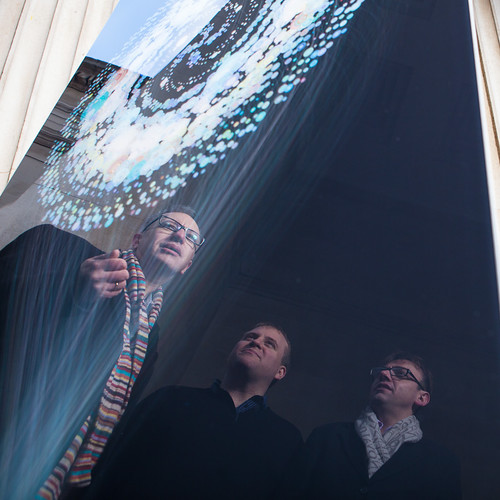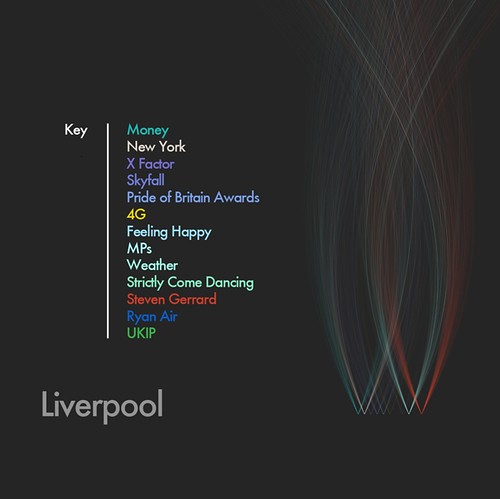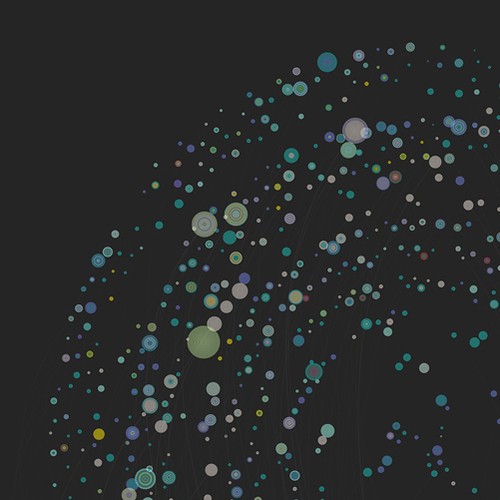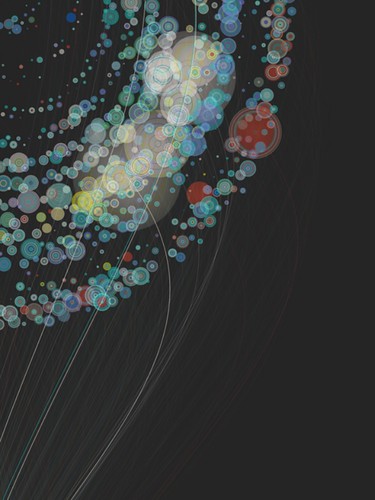Sunday, 5:00am
23 December 2012
While the city Tweets
Brendan Dawes’s digital portraits visualise data drawn from the online chatter of British city-dwellers
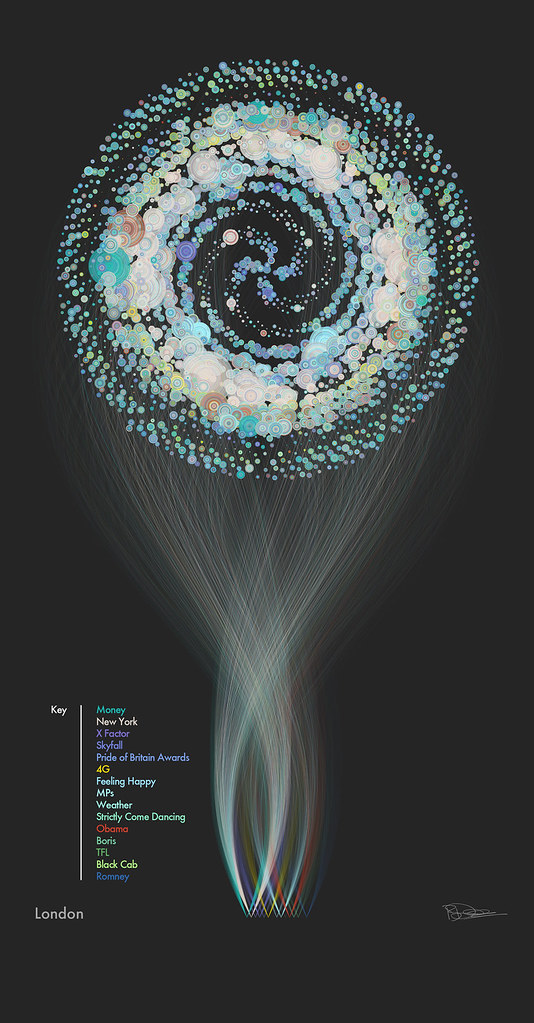
To mark the arrival of the 4G mobile network in eleven cities across the UK, telecom giant EE (Everything Everywhere) commissioned digital artist Brendan Dawes to create ‘digital portraits’ of each city.
Dawes used data specific to each location – conversations and trending topics on Twitter – that had been collated during 29-31 October 2012 by researchers at The Bartlett Centre for Advanced Spatial Analysis at University College London (UCL).
Dr Andy Hudson-Smith (right), Head of the Centre For Advance Spatial Analysis (CASA) at UCL and Steven Gray (centre), Research Associate, CASA, UCL receiving the artwork – ‘London: A Digital City Portrait’ from the artist Brendan Dawes (left). The artwork hangs in the North Lodge at UCL, Gower St entrance.
The data reflected current events such as football matches between Everton and Liverpool, recently released blockbusters (including Skyfall) and politics, all which affected the graphic outcomes.
Each item is a 40" x 77" Lambda print, Diasec mounted on aluminium.
While each artwork bears close relation to the next, highly populated cities such as London, Manchester, Liverpool and Birmingham are richer in colour and density. The other cities are Edinburgh, Bristol, Sheffield, Cardiff, Leeds, Glasgow and Southampton.
A detail of the Birmingham portrait.
Brendan Dawes said: ‘People know accents across the country like Mancunian, Bristolian, and Scouse as soon as they hear them. Now, for the first time, we’ve discovered what they actually look like.’
Dawes continued: ‘It is the people and the activities within it – work, play and the connections within that define our cities. This design is a modern sophisticated response to the representation of eleven of our cities – formed from millions of bits of data as people talk and interact about the biggest events of the day. The shape, derived from nature, evoking the organic nature of a network, softens the often harsh representation of digital, leaving instead an impression of a modern dynamic system, that we call cities, in the 21st century.’
Manchester’s high population affects the density of Dawes’s colour-coded dots.
Eye is the world’s most beautiful and collectable graphic design journal, published quarterly for professional designers, students and anyone interested in critical, informed writing about graphic design and visual culture. It is available from all good design bookshops and online at the Eye shop, where you can buy subscriptions, back issues and single copies of the latest issue.

